You will most likely have to deal with a Ball Python not eating if you keep them long enough. Often, it’s normal, but here’s some tips to help understand when it’s a problem and what you should do.
If you’re Ball Python is not eating: don’t start worrying too soon! For many of them, fasting is a behavior that is repeated every single year, and often corresponds to changes in the weather. Newly acquired pets may also fast for a week or more while they acclimate to their new surroundings.
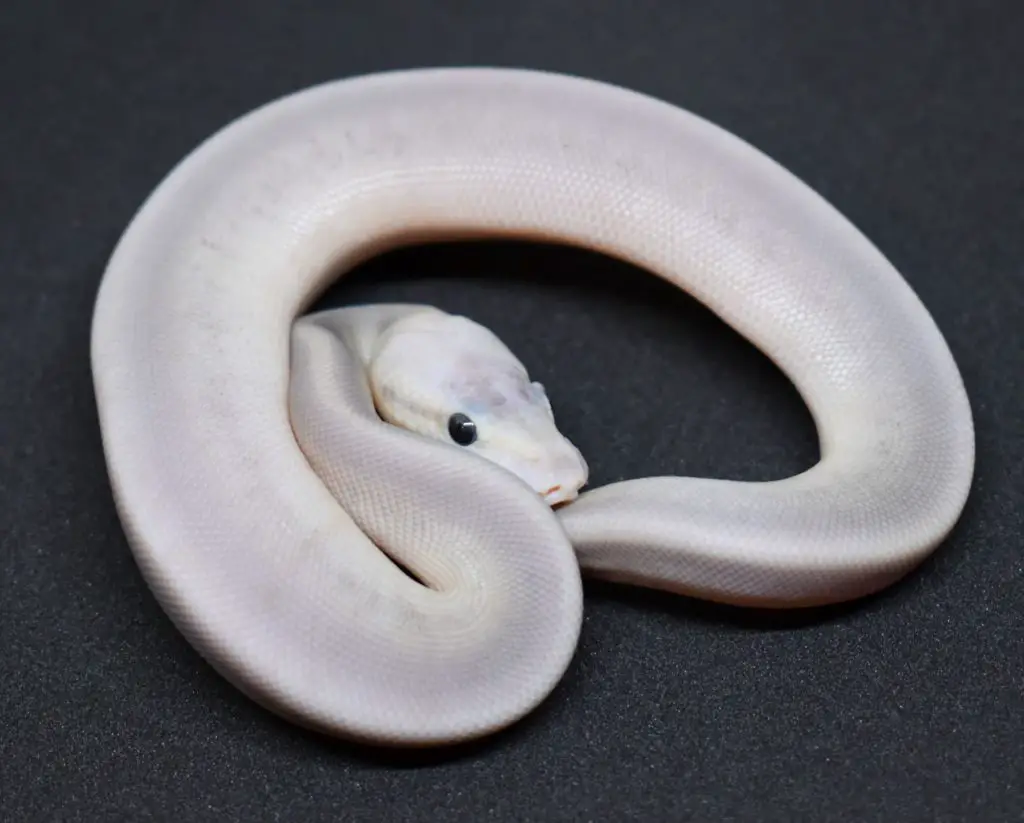
What do I do if my Ball Python won’t eat?
A lot of my snakes will skip a meal on occasion, and it really isn’t a big deal. When I start to investigate things is if they go three weeks or more without any interest. This is the point where you should do two checks to make sure it’s a natural fast. By natural, I mean a fast your snake is doing because it wants to.
First, give your snake a visual health check. This is incredibly quick and easy to do. Pick up your Ball Python and examine its scales. Pay special attention to the vent (cloaca) and head. If all scales are clear and no spots or sores are present, that is the first part of the health check done.
Now listen to your snake’s breathing. It should be quiet, with only the occasional slight whistle noise if it’s moving around rapidly or annoyed. Persistent gasping, bubbling, or clicking is a sign of a respiratory infection and needs immediate treatment.
If you see signs of disease during either part of the health check, contact a veterinarian or local Ball Python breeder for advice. If you see no signs of ill health, move on to the next step.
Second, check your husbandry! Pay special attention to temperatures and make sure you’re measuring them correctly. Read my Care sheet, and make sure everything is just right.
If all is in order, consider these other possible issues…
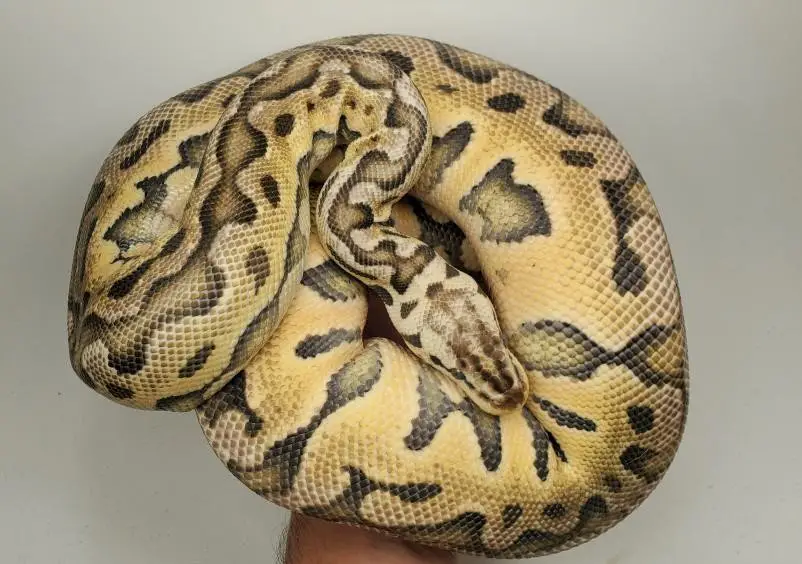
Other reasons your snake may be fasting
Shedding: as you may have read in the Ball Python Humidity and Shedding post, this is a common reason for snakes to stop feeding. I recommend waiting a couple of days after a shed before trying to feed your pet. If it was feeding well beforehand, it should resume feeding without a hitch.
Too much handling: Ball Pythons just aren’t as confident as some larger snakes like Boas. Handling can easily stress them out if it is more often than twice a week. As they aren’t aggressive, their way of complaining is usually by refusing to eat.
An enclosure that is too big: this is again to do with confidence. Many Ball Pythons, particularly hatchlings, are overwhelmed by wide open spaces. Signs an enclosure is too big are a snake that constantly roams and refuses to feed.
An enclosure that isn’t clean: many of my snakes will refuse to eat if their enclosure isn’t clean. Sometimes this can be something as small as a tiny spot of pee in the corner that I didn’t notice beforehand.
Recent changes to their environment: this can be relocation to a new home (when you buy the snake, for example) or new enclosure. With some snakes, even re-arranging the decor in their tub can cause a temporary fast.
Is it normal for Ball Pythons to stop eating?
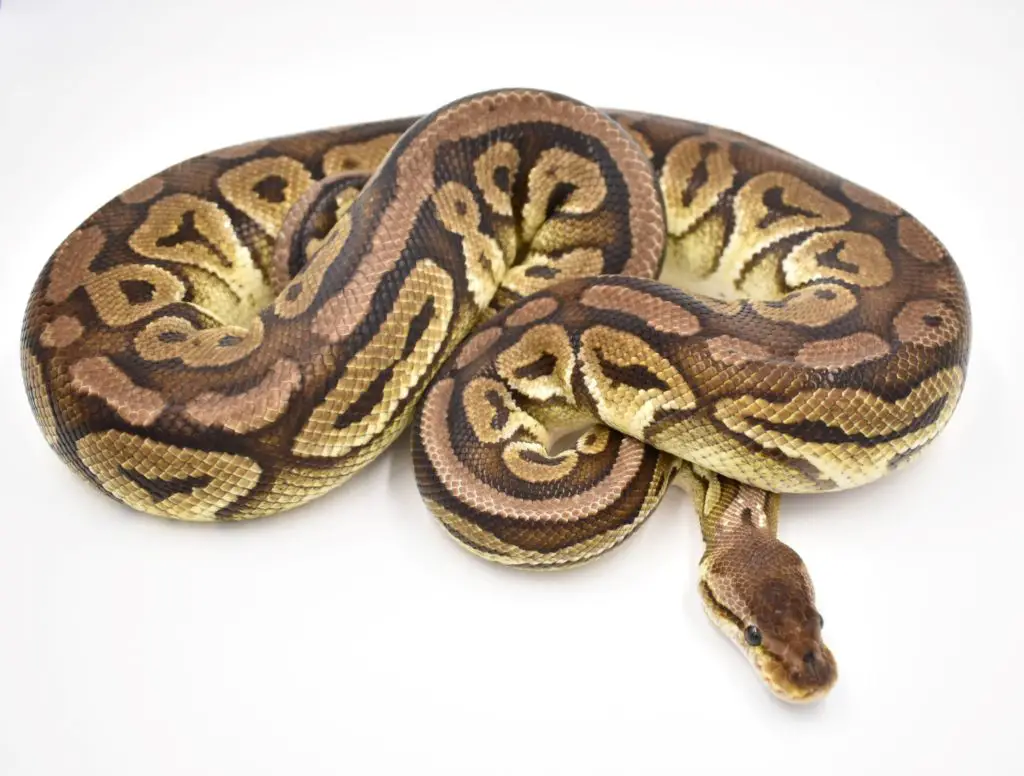
If after doing the checks we just discussed everything is ok, then your Ball Python is more than likely fasting because it wants to. This is a natural occurrence in Ball Pythons, and generally nothing to worry about if the animal had previously been feeding in your care.
Many adult Ball Pythons stop eating each year. It can be weather related, or a total mystery. Most often, however, it is to do with breeding. For an adult, a six month fast is totally fine and does usually correspond with the breeding season, which is generally from November to March, give or take a few months.
The reasons why Ball Pythons stop eating during the breeding season are quite simple. Digesting meals takes energy and room. Males need all their energy for fighting each other and chasing the ladies, so fasting is a clever idea at this point.
Females need the room in their abdomen free for their growing follicles and then eggs. Again, fasting makes a lot of sense here. In both cases you would consider the snakes to be fasting naturally. This is not a problem. They may even look interested, or strike but not eat.
When one of your Ball Pythons is fasting naturally, the only things you need to do are A. stop all handling, and B. weigh it every two to three weeks.

Weigh your snake to find out if there is a problem
By stopping handling, you will reduce any possible stress and give it the peace it may want during the breeding season. By weighing your snake every two to three weeks (not more often as this will again increase stress) you can verify that the fast is indeed natural.
During naturally occurring fasts, adult Ball Pythons can lose as little as 20grams in a month. If your pets weight loss is in line with this, you know it’s perfectly fine. If, on the other hand, an adult rapidly loses 15% or more of it’s bodyweight, or a juvenile more 10% or more, this is not natural and it’s time to consult a vet. Something else could be going on!
How do I convince my Ball Python to eat?
As we’ve seen, fasting isn’t necessarily a problem health-wise. That said, if you want to breed the snake, a long fast can be a real set-back. A lot of females have the incredibly annoying habit of fasting around the 1000gram mark.
Hobbyists refer to this as “the wall,” and from personal experience I can tell you that it really puts a spanner in the works. Look at it this way, you could have a female that never hits the wall reach 1900-2000grams and breed in its third winter. Exactly what you want if you invested a hefty sum of money in a new morph!
Conversely, you could have the same female hit the wall in its second winter and only be able to breed in its fourth winter instead. Ouch! That’s an extra year for the morph’s value to depreciate, making your investment much less attractive.
For me, this is a good reason to try to break a fast if it goes on more than a couple months. Let’s look at some tips for getting Ball Pythons feeding again.
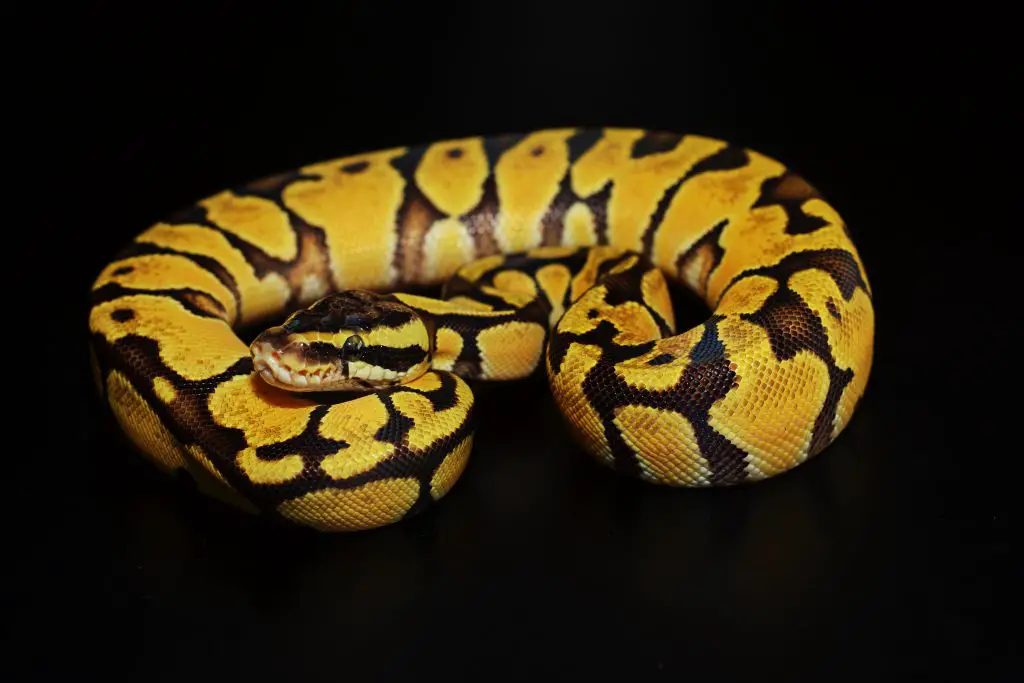
1. Try Drop feeding.
Some snakes just don’t like an audience! Leave a frozen-thawed (warm) prey item at the entrance to the snake’s hiding place and check in the morning.
2. Turn off the lights.
Ball Pythons use a variety of senses to lock onto their prey. They detect movement, heat, vibrations, and extremely low frequency sound. What they aren’t designed for is hunting with a bright light in their eyes.
Try turning off the lights when feeding and you may get a better response.
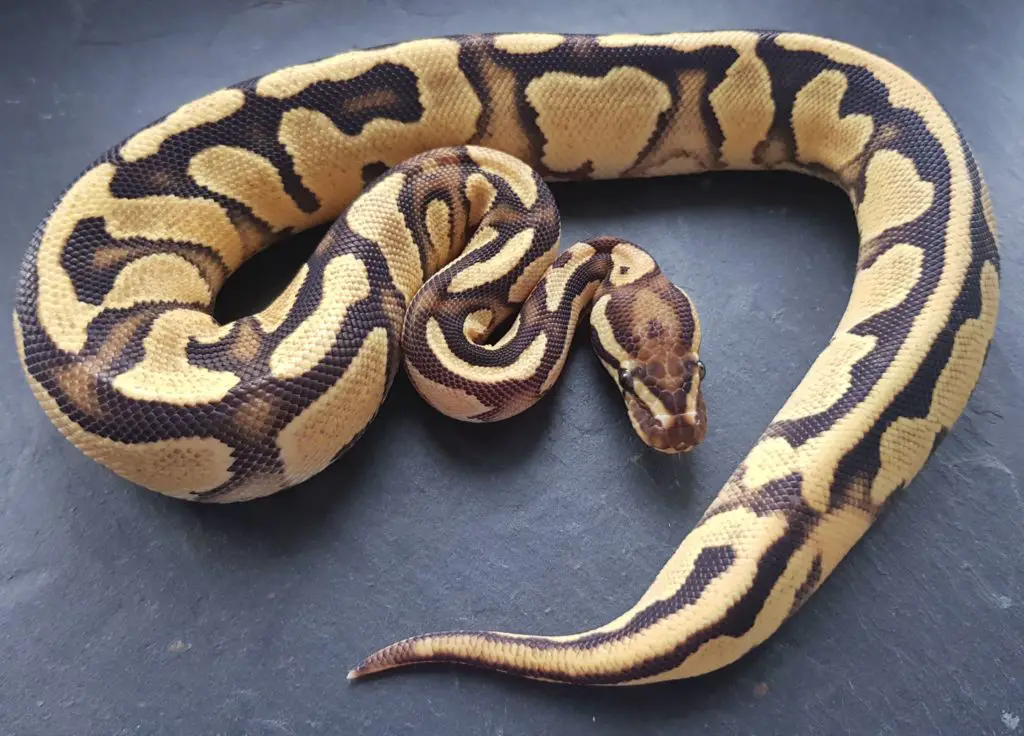
3. Offer a snack, rather than a meal.
Ball Pythons often prefer a light meal when breaking a fast. If your snake was previously eating small rats, try offering a small weaner rat instead.
4. Try differently coloured prey items.
Though rare, there are Ball Pythons that show a preference for prey of certain colours.

5. Change your rodent supplier.
Ball Pythons may lack in brain power, but they sure make up for it with their sense of smell! Sometimes they just like the odour of rodents from some suppliers more than others.
6. Change the prey.
Most Ball Pythons are happy with frozen rats or mice their whole lives. Not all of them though… Some seem to have a natural preference for African Soft-furred Rats (Multimammate Mice), hamsters, gerbils, or chicks.
Trying different prey does often work, but it can sow the seeds of a problem down the line. I say this because some Ball Pythons will refuse to go back to mice or rats. Make sure the new item is consistently available and you won’t have issues sourcing it.
As far as chicks go, female Ball Pythons often go crazy for them. In my opinion, however, they don’t offer the same nutritional value as rodents.
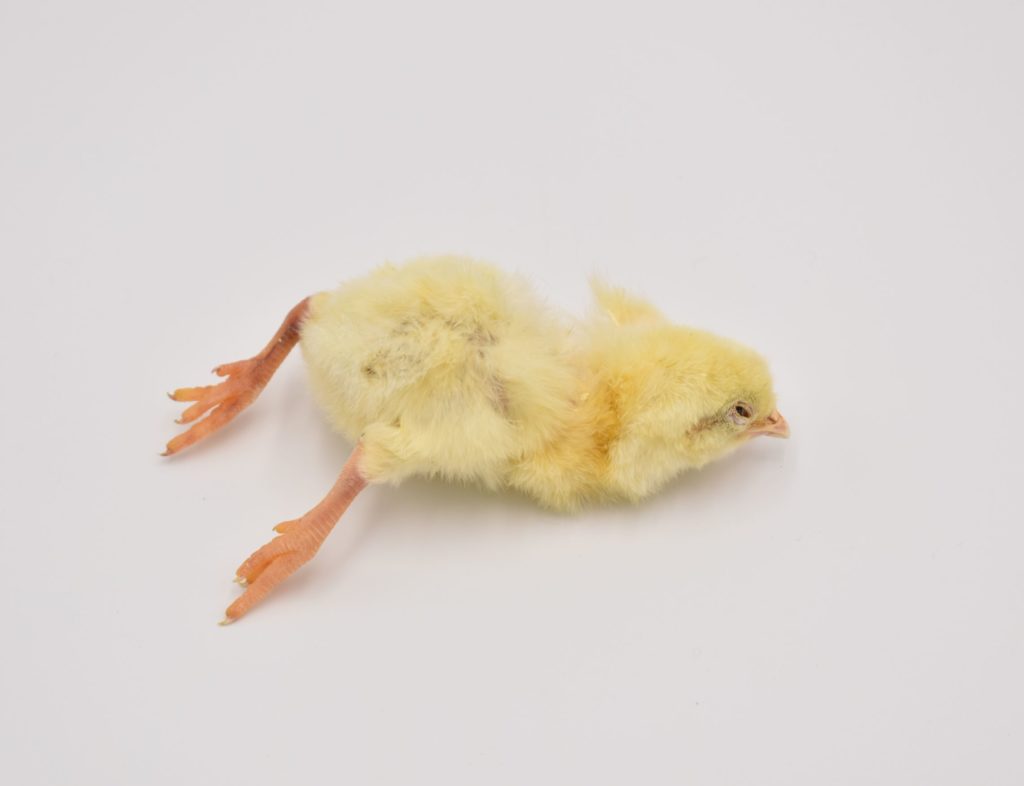
7. Increase the number of hiding places.
Ball Pythons won’t eat if they don’t feel safe. Make sure they have ample hiding opportunities!
8. Move the snake to a smaller enclosure (permanently – not just for feeding).
If it’s been many months and your snake is as stubborn as ever, then try moving it to a smaller enclosure. This can trigger a feeding response if your Ball Python feels less exposed.
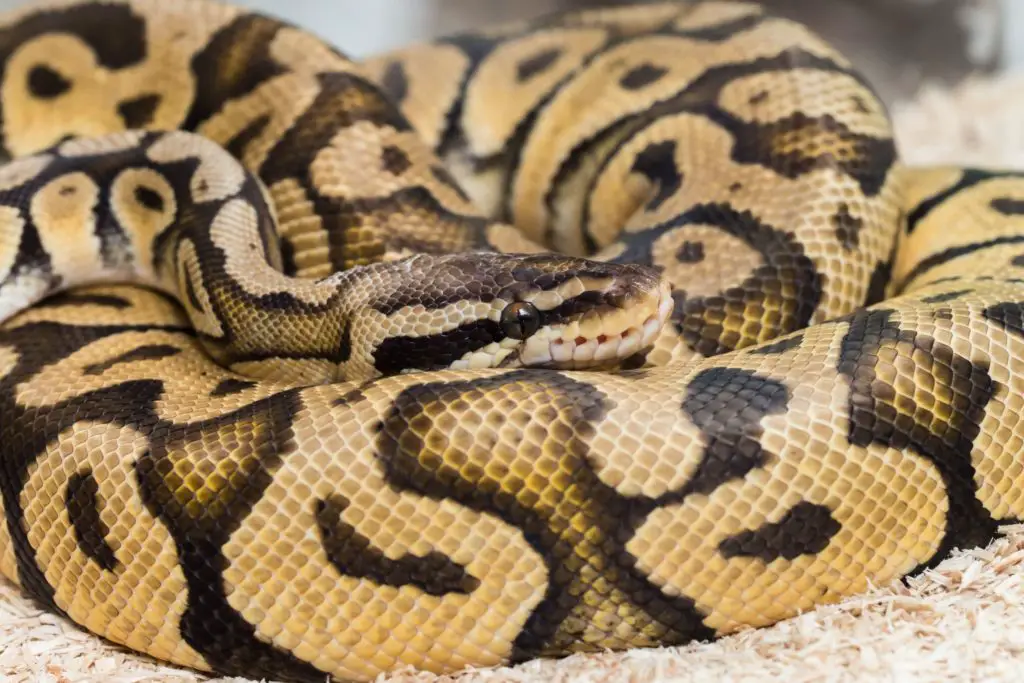
9. Try feeding live prey – if you have the stomach for it.
This one often works a treat. The drawback being that it’s kind of cruel if you think about it… I advise feeding frozen thawed unless you have a starving reptile that only responds to live prey.
Please also be aware that live rodents occasionally fight back and injure the snake. Though not common, it is another eventuality that results in an expensive trip to the vet. Never leave a live rodent in with a snake!
10. Consult a SPECIALIST reptile vet
If it’s been seven months or more and you’re getting worried, I recommend consulting a specialist reptile vet. Emphasis on the SPECIALIST part!
Conclusion

As I mention at the start of this article, fasting is pretty normal for most adult Ball Pythons. By quickly checking up on their health and husbandry, you can give yourself peace of mind.
A lot of times you must wait it out. If you’re planning on breeding the animal, however, it’s a good idea to try some of the tips I’ve listed.
Whatever happens – don’t panic! If your pet’s health and husbandry are ok, it’s just following its instincts.
Key points to remember about Ball Pythons not eating:
- The most common reasons for this species refusing to feed are stress from too much handing or an enclosure that is too big. In fact, the snake’s enclosure is the first place to look Other causes of stress can be loud music, too much light, or lack of a temperature gradient.
- Notwithstanding, if your baby Ball Python isn’t eating, and you’ve just brought it home yesterday – this is normal. Most juvenile Ball Pythons will take at least a few days to adjust to their new environment and start eating. The best way to get them acclimated is simply to leave them be until they start coming out and exploring on their own.
- If, on the other hand your previously acclimated pet Ball Python has started to refuse food it means you should double-check your husbandry. Make sure they have the right conditions, including the proper humidity level and ideal temperatures, especially on the warm side. This should always be the first thing you do.
- Asides from double-checking husbandry, you also need to give your snake a quick checking over to rule out any health issues such as respiratory infections or mouth rot (more on this here).
- To make sure your pets aren’t just being a finicky eaters, try larger prey, smaller prey – or different prey altogether. For example, try feeding an african soft-furred rat, rather than a regular rat. Some small mammals have their own distinctive odor, which may be more or less attractive to your pet.
- Finally, try not to worry too much! If your husbandry is good, and your pet appears healthy, it could be a natural fast. Some adult Ball Pythons respond to seasonal changes, especially during the winter months. They may stop eating every year for a long time, but if they’re healthy they will always start again and this is considered normal behavior. Force feeding should never be considered for a healthy snake.
Also on this topic:
- Best way to feed Ball Pythons
- How often should Ball Pythons eat?
- Do Ball Pythons Need Vitamin Supplements?
- When should you assist feed a baby Ball Python?
- Ball Python pit organs
For more on Ball Python diet in general:
Back to the Ball Python diet page
